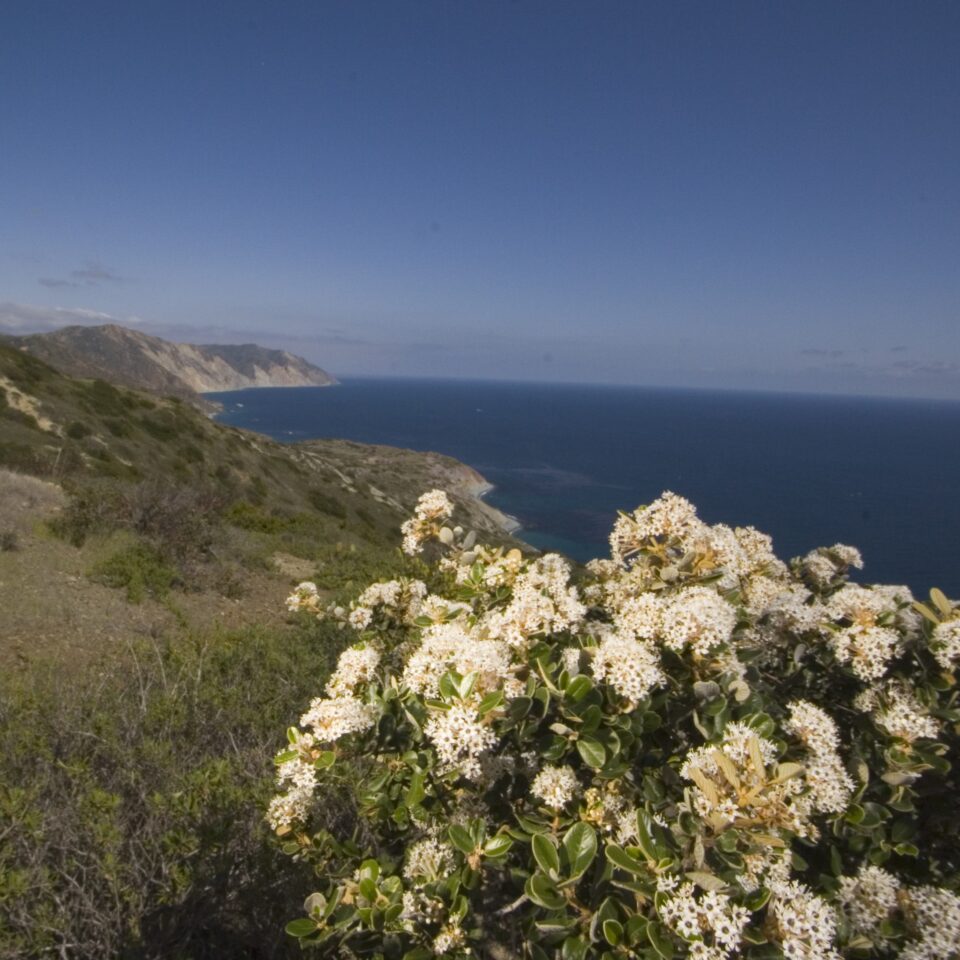Catalina Island Restoration Project
About the Project

What is the Catalina Island Restoration Project?
The Catalina Island Restoration Project, undertaken by the Catalina Island Conservancy, is a comprehensive initiative aimed at reviving and safeguarding the natural ecosystem of Catalina Island. The project seeks to protect the Island’s biodiversity, mitigate erosion, prevent wildfires, and create a sustainable environment for both wildlife and humans to thrive.
FACTS:
- The Catalina Island Restoration Project is the largest restoration project of its kind among the Channel Islands
- It builds on the years of work by the Catalina Island Conservancy which was created to protect Catalina Island by managing 88% of the Island’s 48,000 acres
- Catalina Island contains the region’s longest publicly accessible undeveloped coastline
- Catalina Island provides continued recreational and educational opportunities for LA County and California residents
- Catalina Island supports and protects the most unique species of the Channel Islands chain
- The Catalina Island Conservancy protects 60+ species found only on Catalina – including North America’s rarest tree: Catalina Island mountain mahogany
Species Management: About the Deer
- Habitat destruction: The deer on Catalina Island are an introduced species and have no natural predators, which has allowed their population to grow unchecked. As a result, they have caused significant damage to the Island’s ecosystem by overgrazing, trampling, and destroying native plants and habitats. Because of the damage to the native habitat, invasive grasses are allowed to flourish, putting the Island at risk of devastating fire damage.
- Vegetation destruction: The deer on Catalina Island consume large amounts of vegetation, which leads to overgrazing and depletion of plant species. They also alter the structure and composition of plant communities by preferring to browse on native and endemic plant species over common species which, in turn, affects other animals that rely on those plants for food and shelter. Bison do not present the same problems as their herd size is easily managed and they prefer to graze on grasses, therefore disrupting the ecological balance of the Island to a much less significant degree.
- Soil erosion: The deer on Catalina Island feed on plants that help to stabilize the soil, which can lead to increased erosion and sedimentation in streams and coastal areas. This can have negative impacts on aquatic habitats and species.
- Threat to native and endangered species: The deer on Catalina Island also pose a threat to several native and endangered plant and animal species—including the Catalina Island fox, Santa Catalina Island ground squirrel, Santa Catalina Island shrew and Catalina California quail—which rely on native plants for food and habitat.
Ongoing challenges such as drought, disease, and overpopulation have impacted the long-term health of the introduced mule deer population on Catalina Island. Catalina’s deer population is suffering while also devastating our fragile ecosystem as they attempt to survive.
While there was a lot of rain during the winter of 2022-2023, all the rain potentially makes the situation worse. Vegetation was at full bloom in early summer and water supplies were abundant at the same time as hundreds of new fawns were born. But the deer are already eating the plants, destroying new growth and with the reappearance of the sun, water supplies are once again dwindling, leaving many more deer with even fewer resources. This continuous circle is why the restoration plan is crucial.
Because the deer are managed by the California Department of Fish and Wildlife, there are strict laws in place that prevent the Conservancy from being able to provide additional food or water to the deer since doing so would increase the likelihood of disease transfer. As the deer attempt to survive, the herd of roughly 2,000 mule deer are devastating the Island’s sustainability.
The situation has become untenable for the deer and for the Island’s ecology, leaving the Island at a tipping point. After consulting with California Department of Fish and Wildlife (CDFW), it has been determined that a strategic deer management program is required to implement the plan to revive the Island’s ecosystem.
Species Management:
About the Plants
After habitat destruction, invasive plants are the second greatest threat to biodiversity worldwide. In wildlands, they crowd out native vegetation, degrade wildlife habitat, and can alter natural fire cycles and soil chemistry. Early detection and rapid response to invasive plant infestations are critical to the protection of our natural areas, on the Island and around the world.
It is the mission of our invasive plant program to prioritize and manage invasive species using the most effective and economical adaptive management techniques to protect the Island’s unique natural resources. We actively manage over 40 species of invasive plants across the Island. Their impact ranges from isolated, single locations (such as yellow star-thistle) to widespread invasions across the Island (such as fennel). Our invasive plant team uses a wide array of tools and techniques to discover, map, treat, and monitor these populations for the benefit of our Island ecosystem.





